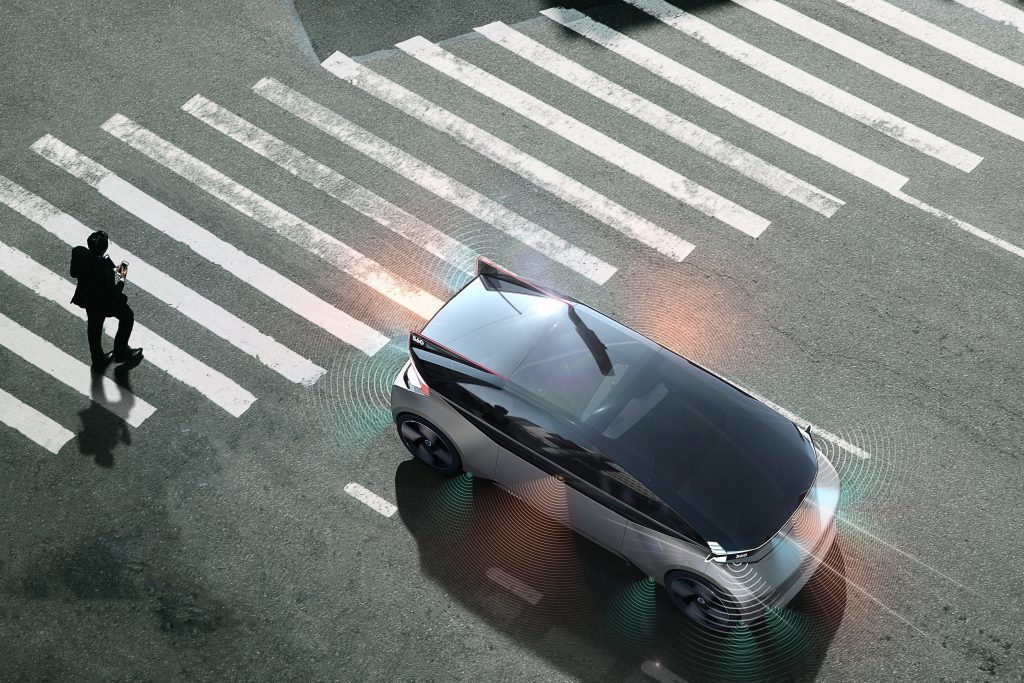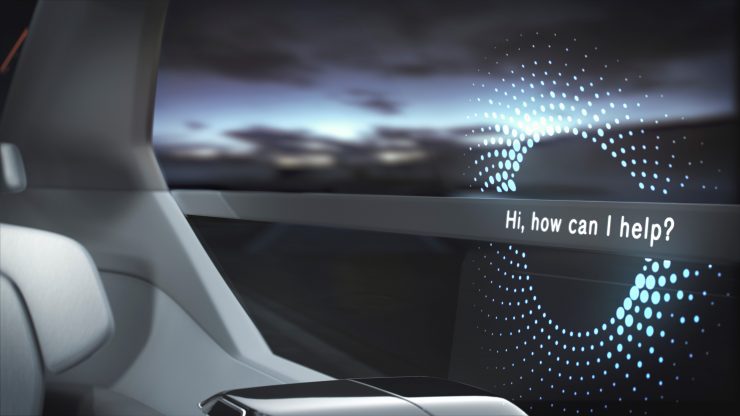In just a few years time, self-driving cars have gone from cars of the future in sci-fi movies to fully materialized reality. Driverless cars are one of the most popular topics among the tech-giants. And what is even more, the autonomous car industry is expected to skyrocket to multi-trillion dollars because of two revolutionary reasons: 1) it will save 1.25 million lives from traffic accidents each year and 2) it will save you the equivalent of 3 years in a lifetime spent in transit.
And although it seems like driverless cars emerged overnight, the concept and prototypes have been present for nearly a century. An early version of a self-driving car was displayed as early as the 1920s, and the first fully autonomous cars appeared in the 1980s. In the 2010s, major automotive manufacturers begin testing driverless car systems.
To program cars to be responsive to their surroundings and be able to navigate, tech and automotive giants are using artificial intelligence and machine learning. In order to understand how a car manufacturer uses machine learning to teach cars how to drive, we looked at how the Swedish automaker Volvo Cars makes driverless cars possible.
Volvo Cars is about safety, has always been about safety, and will always be about safety.
Volvo and driverless cars
Volvo Car Group has been testing self-driving systems for nearly a decade. They first announced their Drive Me pilot project in 2015, which envisioned releasing 100 autonomous cars on the streets in Gothenburg. The groundbreaking project was a step towards more sustainable mobility, joining Volvo Cars, the Swedish Transport Administration, the Swedish Transport Agency, the Lindholmen Science Park and the City of Gothenburg in a single initiative. The project was planned to involve real people from Sweden, China and the UK testing Volvo’s 100 XC90 SUVs and their autonomous car technology. Originally set to be released in 2017, the Drive Me project was pushed for 2021. Volvo has also partnered with Uber in 2016 to work together on introducing self-driving cars to the market.


Volvo’s self-driving car project is the means for achieving their higher goal of reaching 0 deaths from traffic accidents. “Volvo Cars is about safety, has always been about safety, and will always be about safety,” resolutely states Srikar Muppirisetty, Machine Learning and Data Science manager at Volvo Cars, while presenting at the Nordic Data Science and Machine Learning Summit last year. Srikar says that Volvo sees autonomous cars as the enabler for future mobility. This credo is what transforms Volvo from a traditional car manufacturer into a future mobility solution provider. “We would like to provide freedom to move in a sustainable, personalized and safe manner,” Srikar summarizes. Rather than just providing autonomous cars, Volvo aims to be part of the society that fundamentally changes the scenario.


Levels of automation in autonomous cars
When we talk about autonomous cars, we usually have a single concept in our minds about a car that can drive by itself. But actually, there are several automation levels in autonomous cars, from 0 to 5, as Srikar detailly describes all of them in his presentation. Level 0 is basically, no automation, wheres level 1 and 2 have some kind of automation, such as adaptive cruise control, blind spot warning, lane departure warning and lane keep assist. At level 3, the driver is still responsible, but there is conditional automation, meaning the driver can resume control over the vehicle at any moment. Level 4 is fully autonomous, but with a focus on safety and critical driving functions for a short trip, for e.g. a highway pilot. Level 4 automation, however, doesn’t have the capability to drive in every possible road scenario. Level 5 is as autonomous as a human driver. Volvo is concentrated on building autonomous cars with level 4 and 5 automation.


What makes autonomous cars work
There are several car enablers that, as the name suggests, enable a car to be a party or fully autonomous.
Just like we humans possess senses to be aware of our environment, autonomous cars have sensors to be able to perceive and act. A self-driving car has 5 integrated sensors:
- The cameras help detect the objects nearby, recognize pedestrians and track the land markings.
- The radar provides a 360-degree view of the surroundings and helps with changing the lane by tracking vehicles coming from behind.
- The sensor is ultrasonic and detects objects at very low speed.
- The multi-beam laser provides exceptional vision on a long range up to 150 metres so drivers can see far ahead and be warned of a far coming danger.
- Highly-detailed 3D map and the high-precision GPS (high-accuracy positioning system) are integrated to provide the exact location of the car and the surroundings. The map and GPS also help in finding the safest and most efficient way.
Rather than just providing autonomous cars, Volvo aims to be part of the society that fundamentally changes the scenario.
Besides sensors that help the car be aware of the environment, Srikar also mentions other important components that make the car autonomous. Connectivity is also one of the most important aspects of autonomous drive. The car is not only connected to the cloud, but it should also be connected to other cars, the infrastructure and other humans. By connecting to the other cars, information about traffic congestion and road obstacles that may appear at a later point of time is transmitted from one car to the other. Connection with the infrastructure gives information about the environment, buildings, traffic signals, traffic lights, etc.
Machine learning algorithms are the fourth car enabler, but we are going to discuss them in a dedicated section below.


Machine learning algorithms behind driverless cars
But since machine learning is our focus, we will go deeper and look at the technology that underpins Volvo’s driverless cars. Volvo uses ML algorithms in autonomous cars for several use cases:
1) Sensor fusion – Volvo uses clustering and segmentation to fuse information from different sensors.
2) Road – they use ego-motion and image processing in order to classify the road condition in front of the vehicle, for example, if there is slush or ice. This use case is especially crucial because the car should be disengaged if there is a slippery road ahead.
3) Localisation – Volvo employs simultaneous localisation and mapping that helps drivers to localise themselves in the surrounding.
4) Trajectory planning – for this technique, Volvo uses motion planning and control.
5) Control strategy – supervised learning and reinforcement learning are used for control strategy.
6) Situation awareness – For situational awareness, they use detection and classification.
Situational awareness for object detection
Srikar detailly explains the different types of situational awareness:
- Classification of an image is when the computer only classifies the image as a cat, a dog, etc.
- Classification + localisation – the computer not only has to determine that it sees a cat, but has to localize it in the image.
- Object detection – is used when there are multiple objects in an image. In this case, the computer has to detect, classify and localize different objects in the image.
- Instance segmentation – with this type, the computer has to classify all pixels of certain objects inside the image.
The object detection algorithm Volvo uses can be divided into two categories:
1) Regional proposal based – is the traditional method of object detection where initially boxes are proposed on the image and it is determined whether boxes actually exist in the image.
2) Regression/Classification based – this category treats the problem as a regression or classification. It has a unified model to determine whether an object exists and the location of that object.
The first category Regional based is divided into several more methods:
- R-CNN (region based convolutional neural network)
- SSP-net (spatial pyramid pooling layer)
- Fast R-CNN
- Faster R-CNN
- R-FCN
The second Regression/Classification based category is divided into two methods:
- YOLO – You Only Look Once
- SSD
Object detection is the key component that allows a car to perceive the environment, which is crucial for car manufacturers creating autonomous cars like Volvo.
What can we expect from Volvo and autonomous cars in the future


The announcements from Volvo Cars as to what we can expect in terms of driverless cars features really takes us to the future of mobility. Here are several exciting developments from the carmaker:
- Drivers commuting to work will have the commodity to eat, sleep or even watch a movie in the latest generation of Volvo’s XC90 SUVs.
- The joint venture among Volvo and Uber resulted in the first production car capable of self-driving. Volvo’s XC90 SUV base vehicle is equipped with Uber’s self-driving technology and will soon hit the streets as part of Uber’s ride-hailing service.
- Apart from self-driving cars, the trucking industry may also see self-driving vehicles in its fleets. Volvo Group and Nvidia have joint forces to work on autonomous systems for trucking.
- Volvo’s driverless cars will be also driving on roads in China. The Chinese automaker Geely has picked Zenuity – the joint project of Volvo and Swedish technology group Veoneer as its supplier of choice for assisted and autonomous drive software.
For all self-driving cars aficionados, this means several steps until you can just sit back and enjoy your commute to and from work.














Add comment